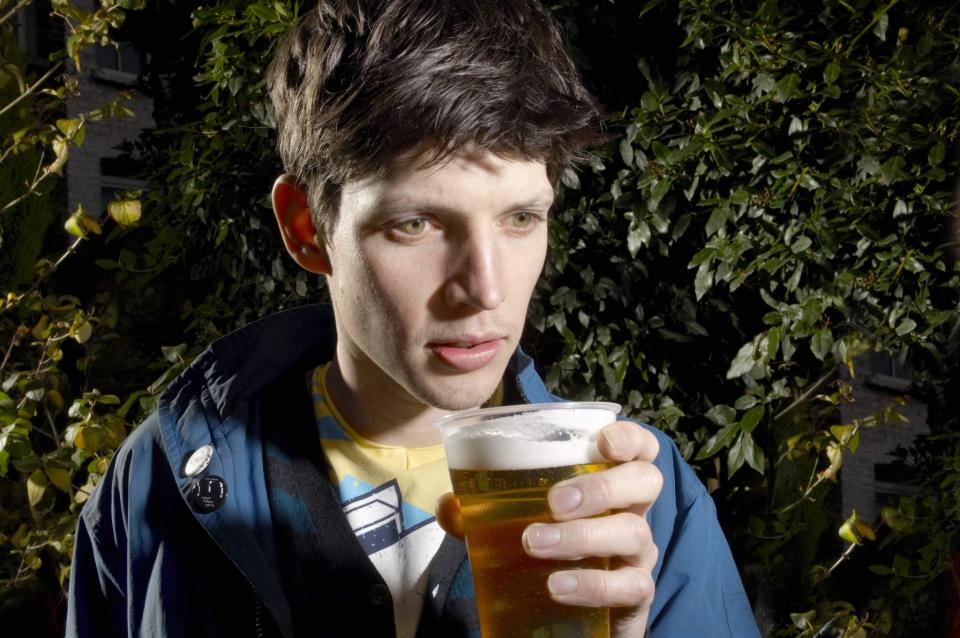Bud Light isn’t the only beer brand struggling: Gen Z’s prohibition vibes are souring the future of beer as we know it

Bud Light continues to hemorrhage customers after a rough 2023, when the brand’s notable promotion with transgender influencer Dylan Mulvaney during March Madness caused many conservatives to boycott the brand.
As revealed in earnings disclosed by its parent company Anheuser-Busch InBev, appetite was lukewarm amid a 17% decline in sales to U.S. retailers “primarily due to the volume decline of Bud Light.”
Meanwhile, Molson Coors was riding the wave of spilled Bud Light, reporting a 9.3% growth in net sales in 2023 on Tuesday. Rubbing salt in the wounds, it partially attributed its strong earnings to its new customers. “Molson Coors was well positioned to benefit from the significant shifts in consumer purchasing habits, largely in the U.S. premium segment in 2023,” the earnings report said, though it didn’t name any of the company’s competitors.
But Anheuser-Busch can’t just blame the culture wars for a tepid year. Customers appear unwilling to pick up the tab on increasing beer costs, which rose nearly 6% from April 2022 to 2023 as beer companies struggled to keep up with the increased cost of packaging and transportation caused by inflation. Other brewers experienced a similar sales slump to Anheuser-Busch.
Heineken’s stock dropped over 6% on Wednesday after the brewer forecasted a modest single-digit profit growth. Heineken raised prices by over 10% in the first half of 2023, and continued price hikes into the second half of the year as volumes declined.
“Pricing has impacted volumes, that’s obvious. What’s good to see is that we are seeing inflation starting to taper and consequently we are also starting to moderate the pricing that we need to offset input cost inflation,” Heineken CEO Dolf van den Brink told Bloomberg.
Constellation Brands, which, like Molson Coors, inherited some of Bud Light’s customers, is also struggling. Net sales of its beers, including Corona Premier and Modelo Especial, rose 4% in the last quarter of 2023, but the company still reported lower-than-expected sales due to inflation-induced price hikes on wine and spirits.
Molson Coors is one of the few beer companies to buck the trend. Despite raising prices like other beer brands, it has kept prices comparatively more affordable. It’s also worked to capitalize on Anheuser-Busch’s Bud Light stumble, spending 19% more on marketing and administration this year.
But beer’s growing unpopularity—much of it to do with a brewing prohibition vibe among Gen Z, the next generation of supposed beer drinkers—could threaten the entire industry.
An ailing ale industry
While beer remains the alcoholic beverage of choice among Americans, it has waned in popularity over the past 20 years, according to a 2022 Gallup poll. U.S. beer shipments in 2023 are expected to be the lowest in a quarter century, and liquor’s strong hold on the market share means it has eclipsed beer and wine sales two years in a row.
Gen Z is partially responsible for these trends. Fewer young adults are interested in drinking, a 2023 Gallup poll shows, with 62% saying they ever drink at all, compared to 72% two decades ago. Not only are Zoomers not interested in spending money to go out, but they also see drinking as unhealthy compared to cannabis. Two in three 18- to 24-year-olds are somewhat or very concerned about the impact of drinking on their health, according to a July 2023 CivicScience survey of 5,545 respondents.
For Zoomers who do want to drink, they prefer higher-quality spirits and ready-to-drink cocktails, though mocktails and nonalcoholic beverages, also favored by Gen Z, are growing at double-digit rates.
Beer companies are trying to keep up with the changing trends, pivoting energy to low- and no-alcohol beverages. Anheuser-Busch plans to have alcohol-free or low-alcohol drinks such as Busch NA and Budweiser Zero account for 20% of its sales by 2025.
But even with meaningful product changes, environmental and geopolitical factors could prevent the beer industry from bouncing back. Danish brewer Carlsberg had to hike prices last year not only due to inflation, but to offset unexpected business loss. In July, the company’s Russian operations were seized by the country's government.
Climate change has also impacted beer-production forecasts. Rising temperature and less rain in Europe mean a decrease in the yield of hops between 4% and 18% by 2050, according to an October 2023 study in Nature. Some American producers are turning to U.S. production of winter barley as an alternative to hops, but it’s not yet the dominant crop, signaling there’s not an infrastructure in place to account for climate change’s impact on beer-related grain farming.
“It will be increasingly difficult for us as plant breeders to provide new varieties of barley and new varieties of hops that can meet, just, all of the terrors of the climate change process,” Patrick Hayes, a professor at Oregon State University, told Fortune in November. “And I say terrors because…it’s that volatility, which is so, so frightening.”
This story was originally featured on Fortune.com
